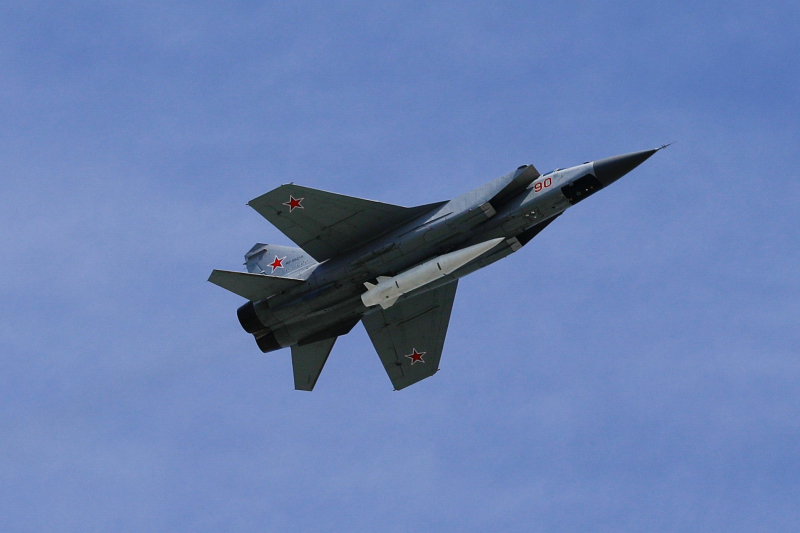The fleet of about 500 MiG-31s has sharply decreased: why, how many such aircraft does Russia still have Yulia Murina There are fewer MiGs in Russia -31/Getty Images (illustrative photo) In Russia, the fleet of aircraft carrying Kinzhal missiles has sharply decreased. Observers analyzed why, and how many more MiG-31s the occupiers had left. in the ranks of Russian aviation. However, over the past 30 years, the existing fleet of occupiers has been reduced fourfold. The Military Balance 2023 indicates the presence of 85 MiG-31BM and 12 MiG-31K interceptors in service with the Russian Aerospace Forces and another 32 MiG-31BM As part of naval aviation, a total of 129 aircraft were produced. True, this figure does not take into account those lost in incidents and as a result of strikes by the Ukrainian Defense Forces during 2023 – 2024. In itself an indicator at more than 120 aircraft it looks weighty. But then it’s worth making a comparison that the total production volume of the MiG-31 of all modifications from 1975 to 1994 amounted to as many as 519 units (Dagger carriers were made by converting combat aircraft), observers noted. < p>They added that they should also make an allowance for the fact that of this amount, approximately 30 to 50 MiG-31s went to Kazakhstan, which was the only foreign user of aircraft of this type. They have probably already been withdrawn from service. That is, if we take the indicator at the level of “about 500 units,” it turns out that over the last 30 Over the years, the existing fleet of MiG-31s at Russia’s disposal has decreased fourfold, and this despite the fact that now new aircraft of this type are not being manufactured, observers noted. Noted that at first glance, there is a completely logical explanation for this rate of decline in the Russian fleet – an objective service life, because production of the MiG-31 started in 1975, and official operation began in 1984. However, there is a nuance in the fact that the Russians themselves, through their “negligence”, reduced the operational life of the MiG-31. Although units with such aircraft seemed to be classified as “air defense special forces,” therefore, it would seem that especially in such units everything should be at the highest level. Observers noted that in the public domain there is an interview with an aircraft technician who served in one of the MiG-31 air regiments in 1987-1993 in the Far North of Russia (the village of Amderma). Aircraft stationed in this operational zone, theoretically, would have to repel attacks by US strategic bombers, and also hunt NATO reconnaissance aircraft, which, according to modern ideas, would clearly have to provide for the presence of a deployed infrastructure for the deployment of the MiG-31. However, the text of the interview clearly showed a deep difference between the ideal and the real, which was manifested in the following factors. For example, at the airfield in Amderma there were no shelters for aircraft at all, even purely for protection from bad weather, they say, why, at altitude the MiG-31 still has to deal with lower temperatures than on the ground. In the event of a breakdown of any element of on-board equipment, everything was written off as a manufacturing defect, the “board” or “boards” were simply sent to the factory to be repaired, the observers noted. Added, interestingly, that The MiG-31 and its direct predecessor, the Tu-128, were compared as follows: “the difference is like between a calculator and an adding machine.” To service the same MiG-31s, mechanics were recruited from among conscripts. If a fighter could not cope with the tasks of working with such aircraft, then they did not draw a conclusion – the complexity of the technology, but rather that the person had poor cognitive abilities. By the way, the ending of this history turned out to be somewhat predictable – in the same 1993, the air base in Amderma was disbanded. Some of the aircraft that were still in service were relocated from there to Russian Kotlas. The military portal also noted that at the Savasleyka airfield, from which carriers of “Daggers” often threaten Ukraine “, MiG-31 type aircraft were based back in the 1990s, there was a retraining center there. True, shelters and other infrastructure began to be built only in 2021, against the background of the deployment of the 44th long-range aviation regiment of the Russian Aerospace Forces for MiG-31K aircraft. “All of the above should be considered just an illustration of how a discrepancy between the ideal and the real can arise during the operation of aircraft of varying complexity and, in fact, why you should never save on the construction of airfield infrastructure, in particular protected shelters,” the observers added.

In Russia, the fleet of MiG-31
The fleet of about 500 MiG-31s has sharply decreased: why, how many such aircraft does Russia still have?
111

